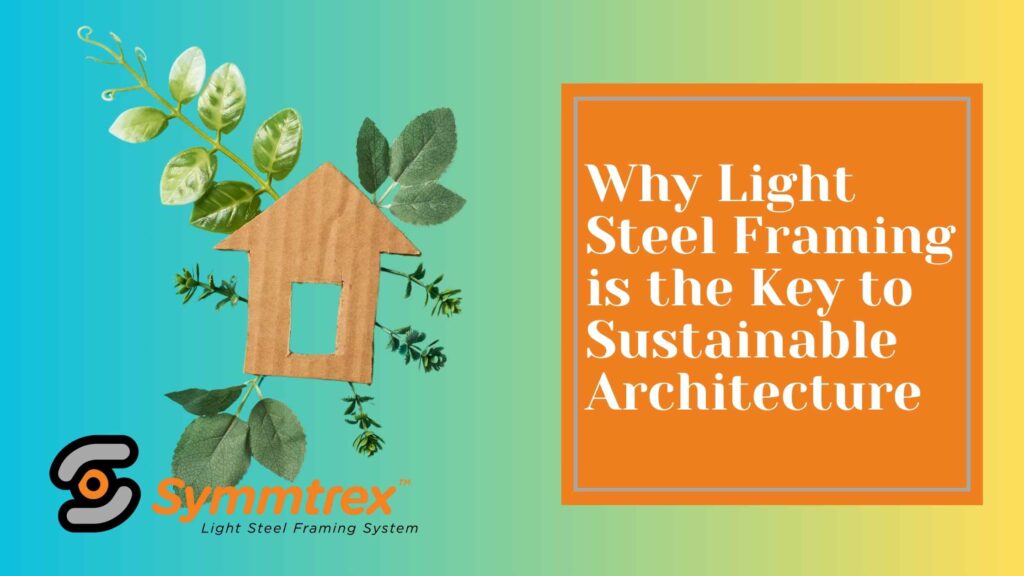In the quest for more sustainable living solutions, the architecture and construction industries are undergoing a significant transformation. Central to this shift towards greener building practices is the adoption of light steel framing, a method that not only promises to revolutionize how we construct buildings but also aligns perfectly with the principles of sustainable architecture. This blog post explores why light steel framing is becoming an indispensable tool in the creation of environmentally friendly, efficient, and durable structures.

The Pillars of Sustainable Architecture
Sustainable architecture is founded on the principles of reducing environmental impact, utilizing resources efficiently, and creating spaces that are livable, functional, and timeless. It seeks to minimize the carbon footprint of buildings, promote energy efficiency, and use materials that are sustainable both in production and lifecycle. Light steel framing emerges as a key player in this field due to its inherent qualities that meet these criteria.
Reducing Environmental Impact
Light steel framing is made from steel, which is one of the most recycled materials in the world. The ability to recycle and reuse steel without degradation of its properties means that light steel framing significantly reduces the demand for virgin materials and the environmental impact associated with their extraction and processing. Furthermore, the precision of steel framing reduces onsite waste, as components can be pre-measured and cut to exact specifications before arrival on site.
Promoting Energy Efficiency
Buildings constructed with light steel framing can achieve superior levels of insulation due to the ease with which insulation materials can be integrated into the steel structure. This results in buildings that require less energy for heating and cooling, leading to lower carbon emissions and reduced energy bills over the building’s lifetime. Additionally, the airtight construction achievable with light steel framing further enhances energy efficiency, making it an excellent choice for sustainable architecture.
Advantages of Light Steel Framing in Sustainable Architecture
Durability and Longevity
One of the key aspects of sustainability is creating structures that stand the test of time. Light steel framing offers exceptional durability and resistance to environmental factors such as moisture, pests, and fire. This longevity reduces the need for frequent repairs or replacements, contributing to the sustainability of the construction over its lifecycle.
Flexibility in Design
Sustainable architecture often requires innovative design solutions to maximize natural light, ventilation, and energy efficiency. Light steel framing provides architects with the flexibility to create complex shapes and designs without compromising structural integrity. This design flexibility ensures that sustainable buildings can be both functional and aesthetically pleasing.
Speed of Construction
The prefabrication aspect of light steel framing means that components can be produced off-site and assembled quickly on-site. This reduces the construction time significantly, which not only lowers labor costs but also minimizes the environmental impact associated with prolonged construction activities. The speed and efficiency of light steel framing make it an ideal choice for projects aiming for sustainability.
Overcoming Challenges for a Greener Future
Educating the Industry
Despite its benefits, the adoption of light steel framing in sustainable architecture requires a shift in mindset and education within the construction industry. Architects, builders, and clients need to be informed about the advantages of light steel framing and how it contributes to sustainability goals.
Innovation in Material Technology
Continued innovation in steel production and recycling processes is essential to further reduce the environmental impact of light steel framing. Advances in material technology could lead to even more efficient use of resources and lower emissions, enhancing the sustainability of this construction method.
Conclusion: Pioneering Sustainable Architecture with Light Steel Framing
As the construction industry moves towards more sustainable practices, light steel framing stands out as a key component in the future of eco-friendly building. Its ability to reduce environmental impact, promote energy efficiency, and offer design flexibility makes it an invaluable tool in achieving the goals of sustainable architecture. By embracing light steel framing, the construction industry can take a significant step forward in creating buildings that are not only sustainable but also resilient, efficient, and beautiful.

